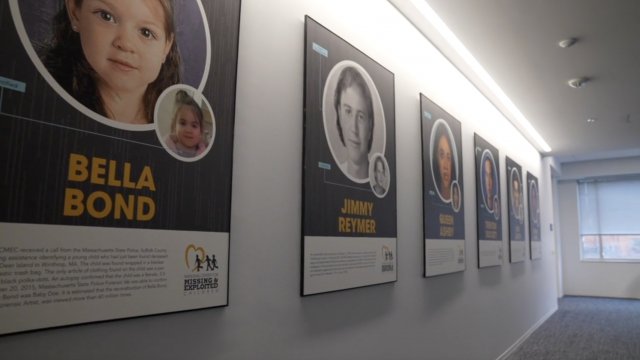The dates for the case files stretch back in time — sometimes for decades. Their faces are an artist's rendering of what they likely looked like. All of them are children who were found dead in America but whose identities remain unknown.
"Right now, we have about 650,660 cases that we're assisting law enforcement, coroners, medical examiners, to find the identities of those human remains. Those are the cases where a human remain was found — we just don't know who it is," said John Bischoff, vice president of the Missing Children Division at the National Center for Missing and Exploited Children.
Bischoff said there is one tool that can be invaluable in helping identify these children.
"When we look to the world of DNA, it is a wonderful tool," he said. "It's a powerful tool."
Using DNA for identification, though, only works when there is something to compare it to.
That is where databases — containing DNA submitted by people to genealogy tracing companies — can come in handy.
However, that DNA is limited. One study found about 75% of the available DNA in those databases comes from people of northern European descent.
"Children of color, families of color, have a smaller footprint in the DNA databases," Bischoff said.
That can limit major breakthroughs in cold cases — like the recent identification of Joseph Zarelli, the so-called "Boy in the Box" — whose body was found in Philadelphia in the 1950s.
The turning point in the case came from DNA submitted to a genealogy website by a relative, which allowed investigators to piece together a family tree and figure out who he was.
"As we saw with the 'Boy in the Box,' I remember watching that on 'Unsolved Mysteries' as a child and thinking, 'There's no way you can have a little kid who was found dead in a box and nobody can figure out who this child belonged to,'" said Erika Marie Rivers, founder of Our Black Girls.
The organization focuses on bringing attention to cases of missing Black girls, including Black "Jane Does" who remain unidentified.
"When it comes to Jane Does, that's even more marginalized because now we don't have a name," Rivers said.
DNA from genealogy databases could help, but trust and privacy concerns surrounding it remain a challenge.
"You speak about Black and brown communities and trusting their DNA with law enforcement or any sort of investigative agency, and there is hesitation," Rivers said. "I mean, I am on 23 and Me — I just wanted to figure out who I am, where my family comes from — but at the same time, I wanted my parents to do it, and my mom was like, 'absolutely not.'"
Some DNA in genealogy databases could be used at the Towson University Human Remains Identification Laboratory.
Chemistry professors Kelly Elkins and Cindy Zeller can extract information encoded in DNA, compare it to samples and fill in the details on human remains.
"It's those differences that allow us to be able to detect whether the person had blue eyes or brown eyes, or blond hair, dark skin or light skin, freckles," Zeller said.
"Before, we were limited to the police databases or the national database," Elkins added. "Nowadays, we have a lot more power because much of the American public has been really excited about personal genealogy opportunities."
However, that power has its limits.
"It does take a bit of luck still that there are relatives who have uploaded their DNA to the database," Elkins said. "So, we're finding that the crimes that are being solved are more of Caucasian people, as opposed to Latinos or African Americans and other populations in our diverse country, and so that's certainly a limitation."
Back at the National Center for Missing and Exploited Children, there is one simple thing the center says anyone can do to help.
"When you see our posters, when you walk out of a store and you see a poster on the wall, when you're searching the web and you trip across one of our posters, is to just stop for a minute and look at that image," Bischoff said.
That move could hold the key to giving back a name to any of these children's faces.
For a look at some of the cases the NCMEC is looking for information on involving unidentified deceased children, you can click here.





